History of the Alister MacKenzie Society
The Alister MacKenzie Society (aka “The MacKenzie Society”) is a non-profit corporation, formed in 1995, with a stated purpose of locating, identifying and protecting material relating to legendary golf course architect, Dr. Alister MacKenzie, and his work.
Dr. MacKenzie was born in Yorkshire, England in 1870. By age 27, he had earned a medical degree from Cambridge University and became a surgeon. That career was interrupted by service in Africa in the Second Boer War, during which he acted as a surgeon but became interested in camouflage. Later, he served in World War I, but as a camoufleur rather than a surgeon. He would put the knowledge gained in his war-time camouflage work to good use in his next career.
Records show that MacKenzie was a member of several golf clubs near Leeds, England, but in 1907 he became a founding member and Captain of The Alwoodley Club in Leeds. He also served on the club’s green committee and was given the task of laying out the course, although other club members retained Harry Colt as a consultant. Fortunately, Colt and MacKenzie formed a quick friendship and mutual admiration, with Colt making only minor modifications to MacKenzie’s design. From that time on, Dr. MacKenzie focused on this “second” career and practiced it vigorously until his death in Santa Cruz, California in 1934. During that span of 27 years, Dr. MacKenzie designed, redesigned or consulted on the design of roughly 65 courses on four continents, a rather miraculous record considering that travel at the time was limited to steamer ships, railroads and early automobiles.
1987
But getting back to the Society’s history, it began informally about eight years prior to the filing of the official incorporation papers. The pivotal person was another doctor, Dr. Gary Nelson, a well-known prosthodontist from San Francisco and a member of Meadow Club, a MacKenzie designed course north of the Golden Gate Bridge in Fairfax, California. In 1987, Dr. Nelson won Meadow Club’s men’s golf championship. That victory and Gary’s warm smile no doubt attracted the attention of the club’s nominating committee, and Gary was asked to become a member of the club’s board of directors. Having a flourishing dental practice, teaching dentistry, and with family responsibilities, Gary did not feel he had time to do the position justice, and so he declined the board appointment. Being grateful for the offer, though, Gary asked if he might do something else for the club. In fact, he had an idea. Having played all the MacKenzie courses in California, Gary thought it would be beneficial to invite interested members from these courses to a two-day meeting at Meadow Club for a friendly competition and a discussion of mutual concerns for maintaining their respective course’s MacKenzie design heritage. Also being an ardent reader and writer, Gary was aware that there existed very little written history about MacKenzie and his work, other than a single book, Golf Architecture, written by MacKenzie and first published in 1920.
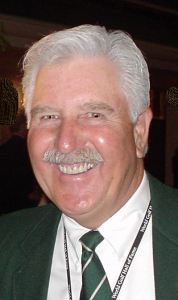
And so, on behalf of Meadow Club, Gary sent invitations to friends at Pasatiempo, Green Hills, Valley Club, Northwoods Golf Club, Sharps Park and Cypress Point Club. Although only the first three clubs were able to send representatives to that first gathering at Meadow Club, many of the staples of future meetings were established there. There were two days of friendly competition contested with six-man teams consisting of each club’s golf professional, the club champion, and players from four different handicap divisions. There was a dinner with a seating plan to assure a maximum interchange among members of the different teams, and an afternoon meeting with discussions of how MacKenzie courses were maintained and whether any significant changes had been made since each one’s founding. Each participant took home a carry golf bag with ALISTER MACKENZIE CLUB CHAMPIONSHIP printed boldly on its side, while the Valley Club took home the victory.
1988
The event at Meadow Club event was so enjoyed by all that a repeat was scheduled for the next year, 1988, at Green Hills. At that venue, John Joseph, Green Hills’ head golf professional, would use Geoffrey Cornish’s book, The Golf Course, as a guide for the works of MacKenzie, and that year, invitations also were sent to several international clubs of MacKenzie design. There were no foreign takers, though. The event included only U.S. teams from three clubs, Meadow Club, Pasatiempo and Green Hills. Green Hills won the team competition, with Pasatiempo offering to host the following year.
1989–1991
At that time, Pasatiempo had a unique governance with two separate board of directors. No member of either board had played in the earlier two events, and ultimately those boards each declined to approve hosting of the event for 1989. The same result ensued for the next two years, as well.
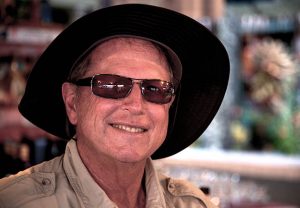
But in the summer of 1990, Dr. Barry Staley, a member of Pasatiempo, had a chance meeting with Dr. Nelson via a mutual friend. and the two played a round at Meadow Club, during which Dr. Nelson related to Dr. Staley the parameters of the previous events, and following which Dr. Staley said that he would try to spark interest in the event at Pasatiempo the following year.
During the balance of 1990 and into the spring of 1991, Dr. Staley lobbied the directors of Pasatiempo and eventually was successful in obtaining the club’s permission to host a MacKenzie gathering later in 1992. That was just the beginning of Dr. Staley’s contributions, though. With the approval in hand, he worked diligently, telephoning other clubs and sending out formal invitations. In addition to the prior participants of Green Hills, Meadow Club, Pasatiempo and Valley Club, two other U.S. clubs were invited and agreed to send representatives to the next gathering in Pasatiempo.
1992
Those two other invitations were extended through Dr. Staley’s contacts with Robert Laubach of Crystal Downs and Gary Vandeweghe of Cypress Point. Mr. Laubach proved to be an invaluable asset, having a long history of participation in the USGA and great organizational insight. Mr. Vandeweghe was an attorney and long-standing member of Cypress Point. Both gentlemen eventually would become presidents of the Society.
In addition to securing participation by two other MacKenzie courses in the 1992 event, Dr. Staley made another important suggestion to Dr. Nelson that would be implemented and that would prove to be extremely helpful in assuring continuity within the Society. That suggestion was to add another player category of “director” to each participating team. The director would be a person from each club assigned to the task of organizing his club’s players, making travel arrangements and ultimately being the point person to work with his club’s board of directors or other governing body in communicating the benefits of participating in the Society and hopefully obtaining approval to host future gatherings. The importance of adding the “Director” category cannot be over-stated. A director would be appointed by each club. There would be no repeat of Pasatiempo where the club had no knowledge of previous gatherings. More importantly, going forward, the Society would have an advocate at each club, who by the very nature of the position would be insular.
For the 1992 event, Dr. Staley also purchased green blazers, embroidered pocket crests with a Society logo and MacKenzie tartan ties for each director. The formality was a hit and brought a new feeling of permanence to the Society, with a scheduled and organized meeting of the directors being held at Pasatiempo.
And so, the event was held at Pasatiempo in the fall of 1992 with Crystal Downs, Cypress Point, Green Hills, Meadow Club, Pasatiempo and Valley Club sending seven-member teams. Dr. Nelson was elected President and Dr. Staley Executive Director. It was agreed that the same clubs would convene the next year, 1993, at Valley Club. Also invited by Dr. Staley and on hand for the event was a member of Lahinch, Dermott Kelly, who was included in the directors’ meeting to provide insight into the wishes of international clubs for being included in the U.S. Society events.
One other Staley inspiration of 1992 was to invite to the gathering Ron Whitten, then golf architecture editor for Golfweek magazine (and currently Golf Digest Architecture Editor). Mr. Whitten made a special presentation to all attendees at a dinner following the first day of golf, thereby establishing another tradition of great value to the Society.
In addition to his presentation at dinner, which included the writer’s observations on MacKenzie course designs and historical facts about the good doctor, Mr. Whitten shared at the directors’ meeting some informal thoughts that proved helpful in the Society’s development. One of those thoughts was that the Society should represent more than just golfers wishing to play the others’ home courses. He advised Society members of the pitfalls of other previously formed societies honoring great golf architects, which had been too loosely structured, expanded too quickly, and had become merely an “excuse” for golfers to play each other’s courses without any more visionary objectives. Another thought shared by Mr. Whitten was that there existed very little literature about MacKenzie and his brilliant course designs. Responding to those thoughts, the directors agreed that the Society should commit to forming some type of archive for information on MacKenzie and be a focus for preserving his physical course designs from the inevitable forces of change.
Finally, one other highlight of the 1992 event was a cocktail party at the former home of Dr. MacKenzie on the 6th fairway of the Pasatiempo course. During that party, Dr. Nelson and Mr. Whitten were discussing MacKenzie, and Nelson observed that Whitten kept looking at the ceiling. Finally, Nelson asked what was so interesting about the home’s ceiling. Whitten responded by telling of the lost manuscript that MacKenzie allegedly had completed shortly before his death and wondered if the house had an attic where the manuscript might be stored. The two found the house’s current owner and were assured that there was indeed an attic but that there was nothing there as it had been cleared during the home restoration some five years previous. However, there would be more to come regarding the lost manuscript in the not too distant future!
1993
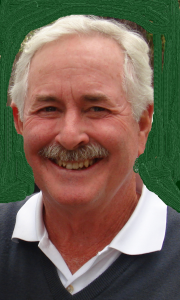
In 1993, the MacKenzie group met at Valley Club. As in the prior years, there were two days of friendly competition on the course, a beginning cocktail party, a players’ dinner and a directors’ meeting. Two new events were established, though. The first was an additional dinner night with spouses and guests included. The other was a separate meeting devoted solely to MacKenzie history. This meeting was primarily the product of two people, Dr. Staley and Terry Bliss of the Valley Club.
For his part, Dr. Staley had floated another ground-breaking idea that would prove both popular and wise. Seven seemed an odd number for a club team, and so Barry suggested adding an eighth member to each team titled the “Club Historian.” Barry pointed out the obvious, which was that the common denominator binding the MacKenzie clubs together was their shared history of being designed by Dr. Mackenzie. What better way, he queried, was there to assure the recording of club history and sharing at each meeting than to have official club historians. The historians would have indefinite terms, determined only by each club, and they would add a strong element of continuity to the Society. The historians would be charged with disseminating their historical findings and focusing the influential members of each club on the value of preserving the original design concepts of Dr. Mackenzie. And so, the teams attending the event at Valley Club were expanded to eight individuals, including each club’s appointed historian.
This is the point at which Terry Bliss was instrumental. Being Valley Club’s director and the person planning the 1993 event, he blocked off several hours on the schedule for a meeting devoted solely to history. The discussion at that meeting was an eye-opener, with over forty attendees crowding Valley Club’s main dining area. The historian from each participating club showed documents, photographs and other materials, thought to be lost, but that each had been able to recover in just the past year. The findings led to the realization that there were, indeed, many items that could be found regarding MacKenzie, if only one exercised creativity in the search. The collective participation also was an inspiration to search for more.
1994
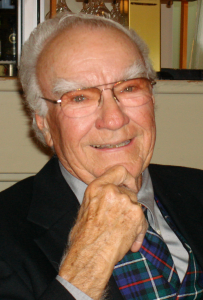
Following the successful and promising gathering at Pasatiempo, another pivotal event occurred. Early in 1994, Dr. Staley received a telephone call from an insurance executive living in Colorado. The man’s name was Ray Haddock, and he was Alister MacKenzie’s step-grandson. Ray told Barry that he recently had started playing golf and asked if Barry might help him play some of MacKenzie’s creations. Barry quickly arranged for Ray to play a round with him at Pasatiempo, and in passing, mentioned the Society’s effort to locate any historical documents relating to Dr. MacKenzie.
A month later, Ray arrived at Pasatiempo and showed Barry a box that he had found in the attic of his home in Colorado, stored in a cedar chest of his father’s and untouched for probably 50 years or more. The box contained a partially handwritten and partially typed carbon copy of a manuscript that turned out be of the Spirit of St. Andrews, the book written by Dr. MacKenzie in the late 1920’s and early 1930’s about which Ron Whitten had inquired the previous year at the Pasatiempo gathering. Apparently, the original had been submitted to a New York publisher in 1933 but mysteriously had been lost following MacKenzie’s death in 1934 and presumably destroyed. The manuscript Mr. Haddock had was the only known copy. Barry took the manuscript home after the round and stayed up most the night reading it.
Being led by the core of organized history enthusiasts, the informal society gathered at Crystal Downs in 1994, for a pivotal meeting that included not only the previously mentioned clubs, but now also an attendee from Royal Melbourne in Australia. At that meeting, Robert Laubach of Crystal Downs urged the creation of a more formal organization with clearly stated goals, and the concept was approved by the directors. Mr. Laubach recruited Crystal Downs historian, Dave Rosenberger, who was an actively practicing tax attorney, to draft the necessary documents. Dave was named Legal Counsel to the Society.
Following many suggestions from other directors and after the review of numerous drafts, Dave finalized Articles of Incorporation following the Crystal Downs gathering and they were submitted to the State of Michigan on January 5, 1995. The new non-profit corporation was named “The Alister MacKenzie Society.” The newly formed organization’s Articles stated the purpose of the Society as follows:
To locate, identify, and preserve information and documents relating to Alister MacKenzie (1870 – 1934) and his work, and to serve as a resource for historical scholars and others who have a legitimate interest in Dr. MacKenzie, in the products of his work, and in attempting to maintain the integrity of design and intent of the original MacKenzie golf courses.
In addition, an application was made to the Internal Revenue Service, and the Society received tax exemption as a charitable organization, based on its historical investigation and preservation objectives. Detailed bylaws also were drafted and adopted.
1995
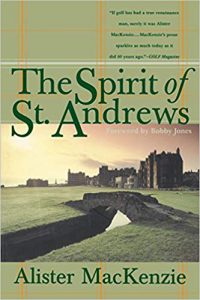
News of Barry Staley’s unexpected find from Ray Haddock of the Spirit of St. Andrews manuscript spread quickly. Barry informed Society Legal Counsel Dave Rosenberger about the manuscript, and Dave referred Mr. Haddock to a boutique golf book publisher, Sleeping Bear Press, located near Ann Arbor, Michigan. In 1995, just prior to the British Open being held at St. Andrews, the book was released for sale. It was available in two formats — a special boxed volume and a hardbound general edition. Twenty-five thousand copies were sent to Scotland, where Ray Haddock held a book signing during the Open tournament. All copies sold out. The line for Ray’s signing at one point stretched “around the block.”
The following year, at the gathering at Meadow Club, Ray graciously donated money from the book sale proceeds to the Society for the establishment of the “Lido Prize.” The name “Lido” commemorated Dr. MacKenzie’s winning hole design of 1914 in Country Life magazine’s contest for the finishing hole of the Lido Club, which was to be constructed on Long Island, New York under the supervision of Charles Blair MacDonald. That victory catapulted MacKenzie into the ranks of major golf course designers of the era.
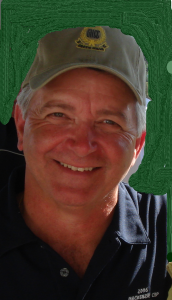
So, aptly, the Society’s Lido Prize would be awarded annually to an aspiring architect for the best hole design submitted to and judged by an established architect appointed by the Society. The prize originally was administered by Bob Weisgerber and Gene Zanardi, both of Green Hills. Following Bob’s death, Gene continued to shepherd the prize program and still retains that responsibility.Throughout the years, Society participants have added to the prize fund and participation in the program has been increased by coverage in golf and turf management publication. Submissions have grown to as many as 100 per year. Judges for the contest have included Arnold Palmer, Gary Player, Nick Faldo, Ben Crenshaw and other notable professional golfers/course designers.
Later Years
Annual events of the Society have been held in each subsequent year. The Directors officially have titled these as “Gatherings,” to reflect that each annual occurrence emphasizes camaraderie, information exchange and collection, and education, not simply a golf tournament. Although the tournament features an annual victor, with the winning team’s name inscribed on a permanent trophy housed at Meadow Club, each other team graciously accepts a second-place finish. The centerpiece of each gathering is the historical meeting, but each year also features an opening cocktail party, directors’ meeting, team directors’ meeting, an informal two-day golf event, a players’ dinner with a featured speaker and another dinner with spouses and guests. Emphasis is always on history, preservation and the perpetuation of Alister MacKenzie’s design principles that make golf such an enjoyable pastime for golfers of all skill levels.
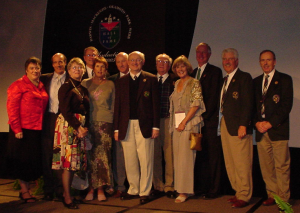
In 2005, Alister MacKenzie was inducted posthumously into the Golf World Hall of Fame in St. Augustine, Florida for his lifetime achievements. Invited guests for the two-day ceremony included Ray Haddock and MacKenzie Society representatives Gary Nelson from Meadow Club, Barry Staley from Pasatiempo, Dave Rosenberger from Crystal Downs, Nick Leefe from Alwoodley and Ken Mould from St. Charles. Ben Crenshaw gave the official tribute speech recounting MacKenzie’s career. The ceremony was carried live on the Golf Channel.
More recently, MacKenzie Society representatives and a former Lido prize winner, Bo Links, have been active in efforts to preserve MacKenzie designed Sharps Park Golf Course in Pacifica, California, which the City of San Francisco had proposed be closed and turned into a special wildlife preserve.
Today, the Alister MacKenzie Society has fifteen member clubs, each one joining in the year indicated below:
1987 – Meadow Club*
1987 – Green Hills*
1987 – Pasatiempo*
1987 – Valley Club*
1992 – Crystal Downs*
1992 – Cypress Point Club*
1993 – Lahinch*
1995 – Royal Melbourne*
1995 – Cork
1997 – St. Charles
1998 – Alwoodley
1998 – Moortown
1998 – Titirangi
2002 – Claremont
2007 – Jockey Club
Membership is restricted to golf clubs that can clearly document their courses’ MacKenzie design heritage. New members must be sponsored by a Founding Member club and must be approved by the MacKenzie Society’s Board of Directors.
The Board of Directors consists of individuals nominated by the governing bodies of each of the Founding Member clubs. These Founding Member clubs are indicated by an asterisk in the list above and consist of the original U.S. member clubs involved in incorporation of the Society and the two international representative members, Lahinch and Royal Melbourne, who also were present at the official founding in 1994. Nominees from these member clubs are then elected as directors by the existing Board of Directors of the Society. Directors generally each serve a five- year term but may be re-elected. Several directors have served more than ten years and have brought significant continuity and stability to the organization.
Members other than Founding Members each may designate a Team Director, but Team Directors have no voting rights.
A nominating committee consisting of past presidents of the Society nominates a slate of officers, each of whom serves for a period of two years, except for the secretary, treasurer and executive director, who are appointed by the Board and generally serve longer terms for purposes of continuity. Each member club, in accordance with its internal procedures, also designates an historian to attend the Society’s annual meetings.
A parallel but independent MacKenzie Society has developed in Europe, and its designated representative reports annually to the Board of the U.S. Society on activities of the European participants.
In addition to members, the Society includes Affiliates and Honorary Affiliates to accommodate other courses, such as Haggin Oaks in Sacramento, California and Redlands Country Club in Redlands, California, as well as organizations and individuals, each with a significant interest in the work of Dr. MacKenzie but otherwise not meeting the complete criteria of a MacKenzie designed course. Affiliates and Honorary Affiliates must be approved by the Board of Directors.
The Society is extremely proud of its record and the historical resources it has accumulated that have inspired and guided accurate restoration work at almost every member course, as well as at other MacKenzie courses around the globe.

The author, Dave Rosenberger, expresses thanks to Gary Nelson and Barry Staley for their substantial contributions to the foregoing history.
